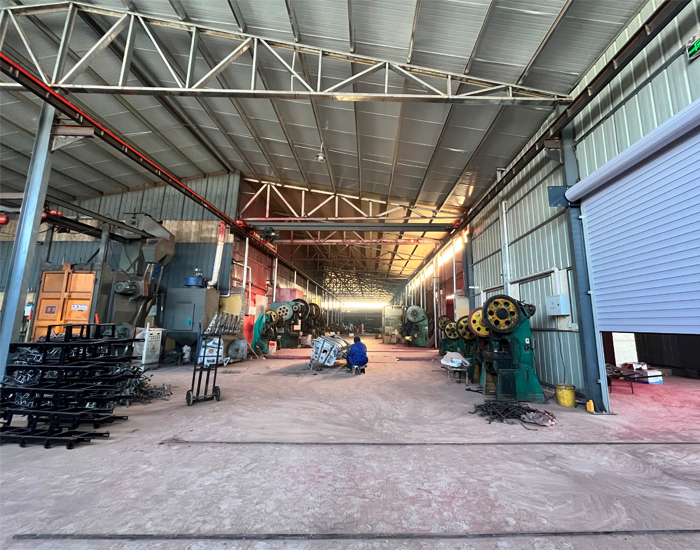Innovative Machinery for Efficient Wheat Crop Production and Harvesting Techniques
The Evolution of Wheat Crop Machines Enhancing Efficiency in Agriculture
Wheat is one of the most important staple crops in the world, providing food for billions of people. As the global population continues to grow, the demand for wheat is increasing, necessitating advancements in agricultural technology. One significant area of innovation is the development of wheat crop machines, which have transformed how farmers grow, harvest, and manage wheat.
The Historical Context
Historically, wheat cultivation was labor-intensive, relying heavily on manual labor and basic tools. Early farmers used simple implements like sickles and wooden plows, which limited productivity. With the onset of the Industrial Revolution in the 18th century, mechanization began to take root. The introduction of the mechanical reaper by Cyrus McCormick in the 1830s was a game-changer, drastically improving efficiency in wheat harvesting. As technology advanced over the decades, more sophisticated machines were developed to meet the increasing demands of agricultural productivity.
Modern Wheat Crop Machines
Today, wheat crop machines encompass a wide range of equipment designed to improve efficiency at various stages of wheat production. Some of the most prevalent machines include
1. Seeders and Planters These machines ensure that seeds are planted at the right depth and spacing, optimizing germination and growth rates. Modern seeders use GPS technology to maximize accuracy, ensuring that no areas are left unplanted.
2. Combine Harvesters Combine harvesters are multifunctional machines that combine the tasks of reaping, threshing, and winnowing into one process. These machines have significantly increased harvesting efficiency, allowing farmers to harvest large fields in a fraction of the time compared to manual methods. Modern combine harvesters are equipped with advanced sensors and software that provide real-time data on crop yields, enabling farmers to make informed decisions about their harvest.
3. Tillers Tilling is crucial in preparing the soil for planting. Modern tillers have evolved from traditional plows to sophisticated machines that incorporate various tilling methods, leading to improved soil structure and aeration. Proper tilling also aids in controlling weeds and pests, contributing to better crop yields.
4. Sprayers Crop protection is vital in maintaining healthy wheat plants. Advanced sprayers allow farmers to apply fertilizers, herbicides, and pesticides efficiently and accurately. Many of these sprayers are equipped with GPS technology to ensure even distribution, minimizing waste and environmental impact.
wheat crop machine

5. Grain Trucks and Trailers Post-harvest handling is another important aspect of wheat production. Grain trucks and trailers are essential for transporting harvested wheat to storage facilities or markets while minimizing spoilage and damage.
The Role of Technology
Technology plays a pivotal role in the evolution of wheat crop machines. Automation, artificial intelligence, and data analytics have enhanced the capabilities of modern agricultural machines. Precision agriculture, which utilizes data from sensors and satellite imagery, allows farmers to monitor crop health and soil conditions in real time. This technology enables targeted interventions, such as applying fertilizers only where needed, thus reducing costs and environmental impact.
The integration of drones into agriculture has also become increasingly popular. Drones can survey fields, monitor crop health, and even assist in planting seeds. This aerial perspective provides valuable insights for farmers, allowing them to make data-driven decisions to optimize their yields.
Benefits of Advanced Wheat Crop Machines
The benefits of using advanced wheat crop machines are manifold. Firstly, they significantly boost productivity, enabling farmers to cultivate larger areas of land efficiently. This increased efficiency translates into higher yields, which are crucial for meeting the growing global demand for wheat.
Secondly, modern machines reduce labor costs by minimizing the need for manual labor, which is becoming increasingly scarce in many regions. With fewer workers needed for planting and harvesting, farmers can allocate resources more effectively.
Lastly, advanced machines contribute to sustainable farming practices. By employing precision technologies, farmers can reduce chemical inputs, lower fuel consumption, and implement conservation tillage methods that protect soil health.
Conclusion
The evolution of wheat crop machines represents a significant advancement in agricultural practices. As farmers face the challenges of increasing global demand and environmental concerns, continued innovation in this field will be essential. The integration of advanced technologies will not only improve the efficiency and sustainability of wheat production but also ensure food security for future generations. As we look to the future, the role of wheat crop machines will undoubtedly remain crucial in the quest for sustainable agriculture.
Latest news
-
When to Upgrade Your Old Forage HarvesterNewsJun.05,2025
-
One Forage Harvester for All Your NeedsNewsJun.05,2025
-
Mastering the Grass Reaper MachineNewsJun.05,2025
-
How Small Farms Make Full Use of Wheat ReaperNewsJun.05,2025
-
Harvesting Wheat the Easy Way: Use a Mini Tractor ReaperNewsJun.05,2025
-
Growing Demand for the Mini Tractor Reaper in AsiaNewsJun.05,2025







